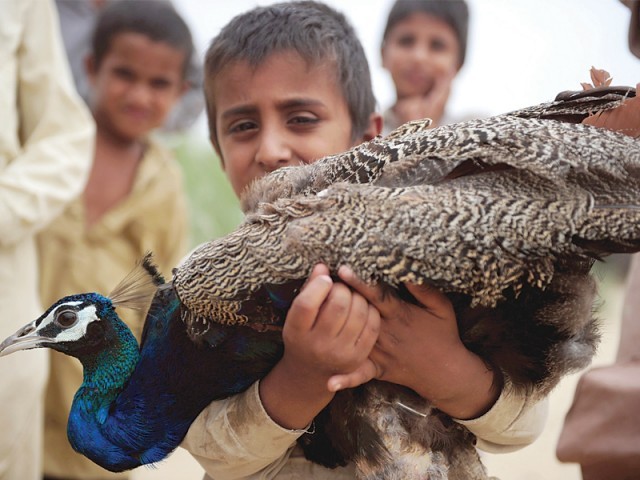More than 193 wild peacocks have been died and remaining are affected by Newcastle Disease (Rani Khait Disease). Let’s have a look on data that i have tried to complie for what actually Rani Khait is and what are precautionary measures to avoid it.
DESCRIPTION OF THE VIRUS
Rani Khait (Newcastle) is caused by Newcastle disease virus (NDV), a type strain for avian paramyxoviruses. Members of this family have a single stranded, linear, RNA, with an elliptical symmetry. The total genome is roughly 16,000 nucleotides. Replication of the virus takes place in the cytoplasm of the host cell.
CLINICAL SYNDROMES
NDV is a contagious and fatal viral disease affecting most species of birds. Clinical signs are extremely variable depending on the strain of virus, species and age of bird, concurrent disease, and preexisting immunity. Four broad clinical syndromes are recognized by scientists. They are Viscerotropic velogenic, Neurotropic velogenic, Mesogenic, and Lentogenic.
VIRULENCE OF NDV
NDV is so virulent that many birds die without showing any clinical signs. A death rate of almost 100 percent can occur in unvaccinated poultry flocks. NDV can infect and cause death even in vaccinated poultry. The disease can vary from mild to severe. A highly contagious and severe form of the disease, called exotic Newcastle disease (END), is so deadly that many birds die suddenly without showing any signs of disease.
TRANSMISSION
NDV is spread primarily through direct contact between healthy birds and the bodily discharges of infected birds. The disease is transmitted through infected birds’ droppings and secretions from the nose, mouth, and eyes. NDV spreads rapidly among birds kept in confinement, such as commercially raised chickens. NDV can survive for several weeks in a warm and humid environment on birds’ feathers, manure, and other materials. It can survive indefinitely in frozen material. However, the virus is destroyed rapidly by dehydration and by the ultraviolet rays in sunlight.
SYMPTOMS
NDV affects the respiratory, nervous, and digestive systems. Symptoms are very variable depending on the strain of virus, species of bird, concurrent disease and preexisting immunity. The incubation period for the disease ranges from 2 to 15 days. An infected bird may exhibit the following signs:
• Respiratory: sneezing, gasping for air, nasal discharge, coughing
• Digestive: greenish, watery diarrhea
• Nervousness, depression, muscular tremors, drooping wings, twisting of head and neck, circling, complete paralysis
• Partial to complete drop in egg production and thin-shelled eggs
• Swelling of the tissues around the eyes and in the neck
• Sudden death
DIAGNOSIS
Enzyme Linked Immunosorbant Assay (ELISA), PCR, Sequence technology.
PREVENTION
Any animals that are showing symptoms of Newcastle disease should be quarantined immediately.
Preodic and regular tests should be done especially in water scars areas
Vaccination of birds
There is an inactivated viral vaccine available, as well as various combination vaccines.
IMMUNITY TO NEWCASTLE DISEASE VIRUS
The basis of this immunity is:
1. Circulating antibodies.
2. Secreted antibody producing mucosal immunity.
3. Cell mediated immunity.
Newcastle disease virus of low virulence induces similar immune responses without causing severe disease. This is the basis of vaccination.
LIVE VACCINES
These vaccines are made with virus that is alive and able to infect cells. Strains of virus of low or moderate virulence are used. They mimic natural infection and induce all three immune responses.
KILLED VACCINES
The ability of the virus to infect cells has been destroyed by treatment with a chemical, radiation or heat. These vaccines invoke only a circulating antibody response.
SOME VACCINE STRAINS OF NEWCASTLE DISEASE VIRUS
Strains of Newcastle disease virus have been broadly classified into four pathotypes as follows:
Avirulent
Causes no disease
Lentogenic
Low virulence, low mortalities, loss of egg production
Mesogenic
Moderate virulence, mortalities up to 50 percent, loss of egg production
Velogenic
High virulence, severe disease with high mortalities.
This Article is Written by “Mohsin Jamshaid” President At Klimatech Environmental Club and Author At Envirocivil.com
Published by www.envirocivil.com




